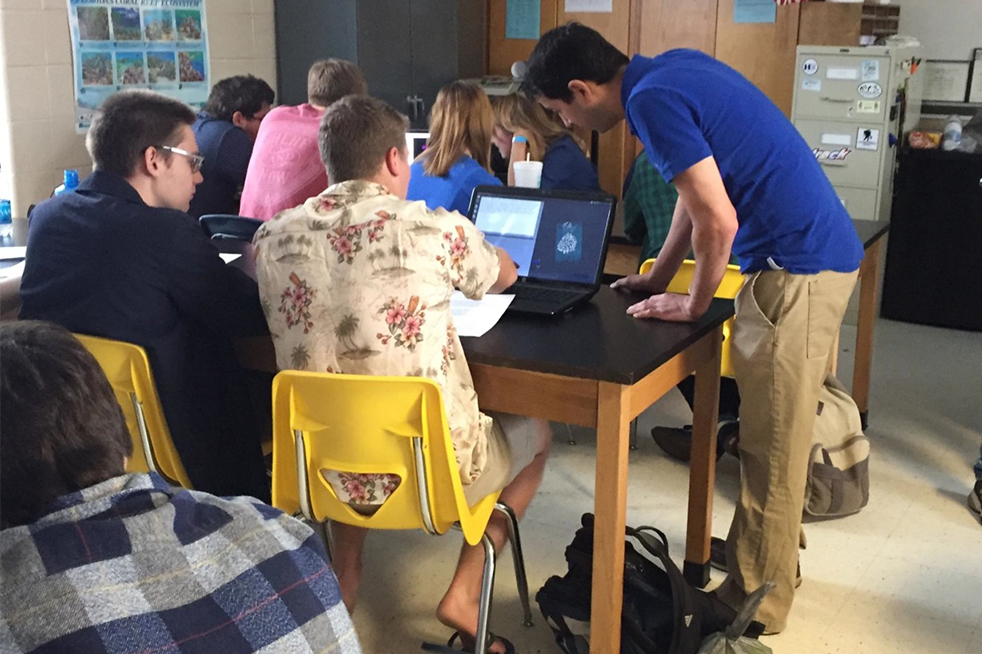Brownian motion, phospholipid membrane, hydrophobic interaction: these are terms many learned in high school biology. For many, each one represents a highlighted term in a textbook and a descriptive paragraph to be memorized. However, a group of students at Pope High School got to see these principles in action this past Friday with the aid of a piece of molecular visualization software known as VMD Lite.
That software was brought by Dr. J.C. Gumbart, who visited the high school as part of the Atlanta Science Festival to demonstrate and explain a number of molecular simulations.
The visit was part of a broad effort towards bringing the hands-on experience of modern science closer to the K-12 classroom. Dr. Gumbart explained that he would like to ensure that science is not something that becomes stale for students.
“Probably the most satisfying thing is when the student starts it up and says, ‘Wow, this is really cool!’ And that is when you know you have already made a connection that you can then exploit to hopefully teach them something in a way that you could not through a text book,” Dr. Gumbart said.
He emphasized he is not the only member of the Tech faculty making connections with specific high schools, and that many of his colleagues are working on similar projects. Such collaborations are encouraged by CEISMC, the Center for Education Integrating Science, Mathematics and Computing, which is a partnership between Tech and local educators dedicated to improving Georgia science education.
To that end, Dr. Gumbart and some of the students working in his lab brought their laptops with a program called VMD Lite, a simplified version of a frequently used tool in biophysics known as VMD (Visual Molecular Dynamics). VMD Lite was designed in Dr. Gumbart’s lab with the goal of “bringing molecular visualization down to the high school level,” as the entire VMD package is too complex for a high school student with limited time to master.
With this tool, students were able to cluster around a computer screen and watch phospholipid membranes form or observe the chaotic motion of water molecules at minute time scales. The lesson module, written and coded by Karl Lundquist and Conner Herndon, respectively, in Dr. Gumbart’s lab, emphasized free-form questions and self-guided exploration to give students a chance to develop their own curiosity.
In the future, Dr. Gumbart sees a number of these modules being developed to teach an array of topics common to high school classes. He explained that he recognized the difficulty of presenting science as a dynamic subject and saw that he, like other professors, is in a position to bring ideas from current scientific research into the classroom.
“If there are ways we can make their job easier, I think we almost have an obligation to do so,” Dr. Gumbart said.
Through these and related efforts, the hope is that learning about biology will be spark students’ curiosity.
